
Salvador Dali Painting Reproductions 1 of 2
1904-1989
Spanish Surrealist Painter
Salvador Domingo Felipe Jacinto Dali i Domenech, 1st Marquis of Pubol (May 11, 1904 - January 23, 1989), was a Spanish Catalan surrealist painter born in Figueres, Catalonia, Spain. Dali was a skilled draftsman, best known for the striking and bizarre images in his surrealist work. His painterly skills are often attributed to the influence of Renaissance masters. His best known work, The Persistence of Memory, was completed in 1931. Salvador Dali's artistic repertoire also included film, sculpture, and photography. He collaborated with Walt Disney on the unfinished Academy Award-nominated short cartoon Destino, which was completed and released posthumously in 2003. He also collaborated with Alfred Hitchcock on the dream sequence from his 1945 film Spellbound.
Dali insisted on his "Arab lineage", claiming that his ancestors were descended from the Moors who occupied Southern Spain for nearly 800 years (711-1492), and attributed to these origins, "my love of everything that is gilded and excessive, my passion for luxury and my love of oriental clothes."
Widely considered to be greatly imaginative, Dali had an affinity for doing unusual things to draw attention to himself. This sometimes irked those who loved his art as much as it annoyed his critics, since his eccentric manner sometimes drew more public attention than his artwork. The purposefully-sought notoriety led to broad public recognition and many purchases of his works by people from all walks of life.
Early life
Salvador Domingo Felipe Jacinto Dali i Domenech, was born on May 11, 1904, at 8:45 a.m. GMT in the town of Figueres, in the Emporda region close to the French border in Catalonia, Spain. Dali's older brother, also named Salvador (b. October 12, 1901), had died of gastroenteritis, nine months earlier, on August 1, 1903. His father, Salvador Dali i Cusi, was a middle-class lawyer and notary whose strict disciplinarian approach was tempered by his wife, Felipa Domenech Ferres, who encouraged her son's artistic endeavors. When he was five, Dali was taken to his brother's grave and told by his parents that he was his brother's reincarnation, which he came to believe. Of his brother, Dali said: "… [we] resembled each other like two drops of water, but we had different reflections." He "was probably a first version of myself but conceived too much in the absolute."
Dali also had a sister, Ana Maria, who was three years younger. In 1949 she published a book about her brother, Dali As Seen By His Sister. His childhood friends included future FC Barcelona footballers, Sagibarba and Josep Samitier. During holidays at the Catalan resort of Cadaques, the trio played football together.
Dali attended drawing school. In 1916 Dali also discovered modern painting on a summer vacation to Cadaques with the family of Ramon Pichot, a local artist who made regular trips to Paris. The next year, Dali's father organized an exhibition of his charcoal drawings in their family home. He had his first public exhibition at the Municipal Theater in Figueres in 1919.
In February 1921, Dali's mother died of breast cancer. Dali was sixteen years old; he later said his mother's death "was the greatest blow I had experienced in my life. I worshipped her … I could not resign myself to the loss of a being on whom I counted to make invisible the unavoidable blemishes of my soul." After her death, Dali's father married his deceased wife's sister. Dali did not resent this marriage as some do think, because he had a great love and respect toward his aunt.
Madrid and Paris
In 1922, Dali moved into the Residencia de Estudiantes (Students' Residence) in Madrid and there studied at the Academia de San Fernando (School of Fine Arts). A lean 1.72 m tall dandy, Dali already drew attention as an eccentric, wearing long hair and sideburns, coat, stockings and knee breeches in the fashion style of the English aesthetes of the late 19th century. But his paintings, where he experimented with Cubism, earned him the most attention from his fellow students. In these earliest Cubist works, he probably did not completely understand the movement, since his only information on Cubist art came from a few magazine articles and a catalog given to him by Pichot, and there were no Cubist artists in Madrid at the time.
In 1924 the still unknown Salvador Dali illustrated for the first time a book. It was the Catalan poem "Les bruixes de Llers" ("The Witches of Llers") by his friend and schoolmate, the poet Carles Fages de Climent.
Dali also experimented with Dada, which influenced his work throughout his life. At the Residencia, he became close friends with, among others, Pepin Bello, Luis Bunuel, and the poet Federico Garcia Lorca. The friendship with Lorca had a strong element of mutual passion, but Dali fearfully rejected the erotic advances of the poet.
Dali was expelled from the Academia in 1926 shortly before his final exams when he stated that no one on the faculty was competent enough to examine him. His mastery of painting skills is well documented by that time in his flawlessly realistic Basket of Bread, which was painted in 1926. That same year he made his first visit to Paris where he met with Pablo Picasso, whom young Dali revered. Picasso had already heard favorable things about Dali from Joan Miro. Dali did a number of works heavily influenced by Picasso and Miro over the next few years as he developed his own style.
Some trends in Dali's work that would continue throughout his life were already evident in the 1920s. Dali devoured influences from many styles of art and then produced works ranging from the most academically classic, evidencing a familiarity with Raphael, Bronzino, Francisco de Zurbaran, Vermeer and Velazquez to the most cutting-edge avant-garde, sometimes in separate works and sometimes combined. Exhibitions of his works in Barcelona attracted much attention and mixtures of praise and puzzled debate from critics.
Dali grew a flamboyant moustache, which became iconic of him; it was influenced by that of seventeenth century Spanish master painter Diego Velazquez.
1929 through World War II
In 1929, Dali collaborated with the surrealistic film director Luis Bunuel on the short film Un chien andalou (An Andalusian Dog). He was mainly responsible for helping Bunuel write the script for the film. Dali later claimed to have been more heavily involved in the filming of the project, but this is not substantiated by contemporary accounts. Also that year, in August, he met his muse, inspiration, and future wife Gala, born Elena Ivanovna Diakonova, a Russian immigrant eleven years his senior who was then married to the surrealist poet Paul Eluard. In the same year, Dali had important professional exhibitions and officially joined the surrealist group in the Montparnasse quarter of Paris (although his work had already been heavily influenced by surrealism for two years). The surrealists hailed what Dali called the Paranoiac-critical method of accessing the subconscious for greater artistic creativity.
Meanwhile, Dali's relationship with his father was close to rupture. Don Salvador Dali y Cusi strongly disapproved of his son's romance with Gala and his connection to the Surrealists, a bad influence on his morals. The last drop occurred when Don Salvador read in a Barcelona paper that his son had recently exibhited in Paris a drawing picturing the Sacred Heart of Jesus Christ with the provocative saying: "Sometimes, I spit for fun on my mother's portrait". Outraged, Don Salvador demanded his son to publicly recant. Upon his sturborn refusal, for fear of being expelled from the Surrealist group, Dali was violently thrown out of his paternal home, in 28 December 1929. His father told him that he would disinherit him and that he should never set foot in Cadaques again. Some say that, upon hearing the bad news, an enraged Dali handed to his father a condom with his own sperm inside, saying "Take that. I owe you nothing anymore!" The following summer Dali and Gala would rent a small fisherman's cabin in a nearby bay at Port Lligat. He bought the place and over the years he enlarged it little by little, building his beautifully oniric and much beloved villa by the sea.
In 1931, Dali painted one of his most famous works, The Persistence of Memory. Sometimes called Soft Watches or Melting Clocks, the work introduced the surrealistic image of the soft, melting pocket watch. The general interpretation of the work is that the soft watches debunk the assumption that time is rigid or deterministic, and this sense is supported by other images in the work, such as the wide expanding landscape and the ants and fly devouring the other watches.
Dali and Gala, having lived together since 1929, were married in 1934 in a civil ceremony (They remarried in a Catholic ceremony in 1958).
Dali was introduced to America by art dealer Julian Levy in 1934, and the exhibition of Dali works (including Persistence) in New York created an immediate sensation. Social Register listees feted him at a specially organized "Dali Ball". He showed up wearing on his chest a glass case containing a brassiere. In 1936, Dali took part in the London International Surrealist Exhibition. His lecture entitled Fantomes paranoiaques authentiques was delivered wearing a deep-sea diving suit. He had arrived carrying a billiard cue and leading a pair of Russian wolfhounds, and had to have the helmet unscrewed as he gasped for breath. He commented that "I just wanted to show that I was 'plunging deeply' into the human mind."
According to Luis Bunuel, Dali and Gala went to a masquerade party in Chicago dressed as the Lindbergh baby and the kidnapper. The uproar in the press was so great that Dali apologized; when he returned to Paris, the Surrealists put him on trial for apologizing for a surrealist act.
Andre Breton accused Dali of defending the "new" and "irrational" in the "the Hitler phenomenon", but the artist quickly rejected this claim saying, "I am Hitlerian neither in fact nor intention." However, when Francisco Franco came to power in the aftermath of the Spanish Civil War, Dali's support of the new regime, among other things, eventually resulted in his purported expulsion from the surrealist group. At this, Dali retorted, "I myself am surrealism." Andre Breton coined the anagram "avida dollars" (for Salvador Dali), which more or less translates to "eager for dollars," by which he referred to Dali after the period of his expulsion. The surrealists henceforth spoke of Dali in the past tense, as if he was dead. At this stage his main patron was the very wealthy Edward James. The surrealist movement and various members thereof (such as Ted Joans) would continue to issue extremely harsh polemics against Dali until the time of his death and beyond.
Edward James helped the young Salvador Dali emerge into the art world by purchasing many works and supporting him financially for two years. They became good friends and James features in Dali's painting 'Swans Reflecting Elephants.' They also collaborated on two of the most enduring icons of the Surrealist movement: the Lobster Telephone and the Mae West Lips Sofa.
"During this period Dali never stopped writing", wrote Robert and Nicolas Descharnes. In 1941, he drafted a film scenario for Jean Gabin called Moontide. He wrote catalogs for his exhibitions like that at the Knoedler Gallery (in New York City in 1943) where he expounded, 'Surrealism will at least have served to give experimental proof that total sterility and attempts at automatizations have gone too far and have led to a totalitarian system. ... Today's laziness and the total lack of technique have reached their paroxysm in the psychological signification of the current use of the college.' He also wrote a novel (published in 1944) about a fashion salon for automobiles. This got a drawing by Edwin Cox in The Miami Herald showing him dressing an automobile in an evening gown."
In 1940, as World War II started in Europe, Dali and Gala moved to the United States, where they lived for eight years. After the move, Dali returned to the practice of Catholicism. In 1942, he published his autobiography, The Secret Life of Salvador Dali. An Italian friar, Gabriele Maria Berardi, claimed to have performed an exorcism on Dali while he was in France in 1947. The friar's estate contained a sculpture of Christ on the cross which Dali had given his exorcist to thank him. The sculpture was discovered in 2005 and two Spanish experts in Surrealism confirmed that there were adequate stylistic reasons to believe the sculpture was made by Dali.
Later years in Catalonia
Starting in 1949, Dali spent his remaining years back in his beloved Catalonia. The fact that he chose to live in Spain while it was ruled by Franco drew criticism from progressives and many other artists. As such, it is probable that at least some of the common dismissal of Dali's later works had more to do with politics than the actual merits of the works themselves. In 1959, Andre Breton organized an exhibit called, Homage to Surrealism, celebrating the Fortieth Anniversary of Surrealism, which contained works by Salvador Dali, Joan Miro, Enrique Tabara, and Eugenio Granell. Breton vehemently fought against the inclusion of Dali's Sistine Madonna in the International Surrealism Exhibition in New York the following year.
Late in his career, Dali did not confine himself to painting but experimented with many unusual or novel media and processes: he made bulletist works and was among the first artists to employ holography in an artistic manner. Several of his works incorporate optical illusions. In his later years, young artists like Andy Warhol proclaimed Dali an important influence on pop art. Dali also had a keen interest in natural science and mathematics. This is manifested in several of his paintings, notably in the 1950s when he painted his subjects as composed of rhinoceros horns, signifying divine geometry (as the rhinoceros horn grows according to a logarithmic spiral) and chastity (as Dali linked the rhinoceros to the Virgin Mary). Dali was also fascinated by DNA and the hypercube - a 4-dimensional cube - and an unfolding of a hypercube is featured in the painting Crucifixion (Corpus Hypercubus).
Dali's post-World War II period bore the hallmarks of technical virtuosity and an interest in optical illusions, science and religion. Increasingly Catholic, and inspired by the shock of Hiroshima, he labeled this period "Nuclear Mysticism". In paintings such as The Madonna of Port-Lligat (first version) of 1949 and Corpus Hypercubus, 1954, Dali sought to synthesize Christian iconography with images of material disintegration inspired by nuclear physics. "Nuclear Mysticism" included such notable pieces as La Gare de Perpignan, 1965, and Hallucinogenic Toreador, 1968–1970. In 1960, Dali began work on the Dali Theatre and Museum in his home town of Figueres; it was his largest single project and the main focus of his energy through 1974. He continued to make additions through the mid-1980s.
In 1968, Dali filmed a television advertisement for Lanvin chocolates and in 1969 designed the Chupa Chups logo. Also in 1969, he was responsible for creating the advertising aspect of the 1969 Eurovision Song Contest, and created a large metal sculpture, which stood on the stage at the Teatro Real in Madrid.
In the television programme Dirty Dali: A Private View broadcast on Channel 4 on June 3, 2007, the art critic Brian Sewell described his acquaintance with Dali in the late 1960s, which included lying down in the fetal position without trousers in the armpit of a figure of Christ and masturbating for Dali who pretended to take photos while fumbling in his own trousers.
In 1980, Dali's health took a catastrophic turn. His near-senile wife Gala was dosing him with a dangerous cocktail of non-prescribed medicine that damaged his nervous system, thus causing an untimely end to his artistic ability. At 76 years old, the 'ever-healthy' Dali was a complete wreck, his right hand trembling terribly, Parkinson-like.
In 1982, King Juan Carlos of Spain bestowed on Dali the title Marquis of Pubol, for which Dali later paid him by giving him a drawing (Head of Europa, which would turn out to be Dali's final drawing) after the king visited him on his deathbed.
Gala died on June 10, 1982. After Gala's death, Dali lost much of his will to live. He deliberately dehydrated himself possibly as a suicide attempt, possibly in an attempt to put himself into a state of suspended animation, as he had read that some microorganisms could do. He moved from Figueres to the castle in Pubol which he had bought for Gala and was the site of her death. In 1984, a fire broke out in his bedroom under unclear circumstances possibly a suicide attempt by Dali, possibly simple negligence by his staff. In any case, Dali was rescued and returned to Figueres where a group of his friends, patrons, and fellow artists saw to it that he was comfortable living in his Theater-Museum for his final years.
There have been allegations that his guardians forced Dali to sign blank canvasses that would later (even after his death) be used and sold as originals. As a result, art dealers tend to be wary of late works attributed to Dali.
In November 1988 Dali entered the hospital with heart failure and on December 5, 1988 was visited by King Juan Carlos who confessed that he had always been a serious devotee of Dali.
On January 23, 1989 while his favorite record of Tristan and Isolde played, he died of heart failure at Figueres, at the age of 84, and, coming full circle, is buried in the crypt of his Teatro Museo in Figueres, across the street from the church of Sant Pere where he had his funeral, first communion, and baptism, and three blocks from the house where he was born.
The Gala-Salvador Dali Foundation currently serves as his official Estate. The U.S. copyright representative for the Gala-Salvador Dali Foundation is the Artists Rights Society. In 2002, the Artists Rights Society made the news when they asked Google to remove customised version of its logo put up to commemorate Dali, alleging that portions of specific artworks under their protection had been used in the logos, and that they were used without permission. Google complied with the request, but denied that there was any violation of copyright.
Symbolism
Dali employed extensive symbolism in his work. For instance, the hallmark soft watches that first appear in The Persistence of Memory suggest Einstein's theory that time is relative and not fixed. The idea for clocks functioning symbolically in this way came to Dali when he was staring at a runny piece of Camembert cheese during a hot day in August.
The elephant is also a recurring image in Dali's works. It first appeared in his 1944 work Dream Caused by the Flight of a Bee around a Pomegranate a Second Before Awakening. The elephants, inspired by Gian Lorenzo Bernini's sculpture base in Rome of an elephant carrying an ancient obelisk, are portrayed "with long, multi-jointed, almost invisible legs of desire" along with obelisks on their backs. Coupled with the image of their brittle legs, these encumbrances, noted for their phallic overtones, create a sense of phantom reality. "The elephant is a distortion in space", one analysis explains, "its spindly legs contrasting the idea of weightlessness with structure." … I am painting pictures which make me die for joy, I am creating with an absolute naturalness, without the slightest aesthetic concern, I am making things that inspire me with a profound emotion and I am trying to paint them honestly. Salvador Dali, in Dawn Ades, Dali and Surrealism.
The egg is another common Daliesque image. He connects the egg to the prenatal and intrauterine, thus using it to symbolize hope and love; it appears in The Great Masturbator and The Metamorphosis of Narcissus. Various animals appear throughout his work as well: ants point to death, decay, and immense sexual desire; the snail is connected to the human head (he saw a snail on a bicycle outside Freud's house when he first met Sigmund Freud); and locusts are a symbol of waste and fear.
Endeavors outside painting
Dali was a versatile artist, not limiting himself only to painting in his artistic endeavors. Some of his more popular artistic works are sculptures and other objects, and he is also noted for his contributions to theatre, fashion, and photography, among other areas.
Two of the most popular objects of the surrealist movement were the Lobster Telephone and the Mae West Lips Sofa, completed by Dali in 1936 and 1937, respectively. The Surrealist artist and patron Edward James commissioned both of these pieces from Dali; James inherited a large English estate in West Dean, West Sussex when he was five and was one of the foremost supporters of the surrealists in the 1930s. "Lobsters and telephones had strong sexual connotations for Dali" according to the display caption for the Lobster Telephone at the Tate Gallery, "and he drew a close analogy between food and sex." The telephone was functional, and James purchased four of them from Dali to replace the phones in his retreat home. One now appears at the Tate Gallery; the second can be found at the German Telephone Museum in Frankfurt; the third belongs to the Edward James Foundation; and the fourth is at the National Gallery of Australia.
The wood and satin Mae West Lips Sofa was shaped after the lips of actress Mae West, whom Dali apparently found fascinating. West was previously the subject of Dali's 1935 painting The Face of Mae West. The Mae West Lips Sofa currently resides at the Brighton and Hove Museum in England.
During the years between 1941 and 1970 Dali was also responsible for creating a striking ensemble of jewels, 39 in total. The jewels created are intricate and some contain actual moving parts. The most famous jewel created by Dali, "The Royal Heart", is crafted using gold and is encrusted with forty-six rubies, forty-two diamonds and four emeralds, and is created in such a way that the center "beats" much like a real heart. Dali himself commented that "Without an audience, without the presence of spectators, these jewels would not fulfill the function for which they came into being. The viewer, then, is the ultimate artist." (Dali, 1959.) The "Dali - Joies" ("The Jewels of Dali") collection can be seen at the Dali Theater Museum in Figueres, Catalonia, Spain, where it is on permanent exhibition.
In theatre, Dali is remembered for constructing the scenery for Garcia Lorca's 1927 romantic play Mariana Pineda. For Bacchanale (1939), a ballet based on and set to the music of Richard Wagner's 1845 opera Tannhauser, Dali provided both the set design and the libretto. Bacchanale was followed by set designs for Labyrinth in 1941 and The Three-Cornered Hat in 1949.
Although most known for his paintings, Dali became intensely interested in film when he was young; going to the theatre to see different shows almost every Sunday. He was part of the era where drawing on the medium of film became popular and silent films were being viewed. He believed there were two dimensions to the theories of film and cinema: 'things themselves'-the facts that are presented in the world of the camera and 'photographic imagination'- the way the camera shows the picture and how creative or imaginative it looks. Dali was active in front and behind the scenes in the film world. He created wonderful pieces of artwork such as Destino, on which he collaborated with Walt Disney. He is also credited as co-creator of Luis Bunuel's surrealist film Un Chien Andalou, a 17-minute French art film co-written with Luis Bunuel that is widely remembered for its graphic opening scene simulating the slashing of a human eyeball with a razor. This film is what Dali is known for in the independent film world. Un Chien Andalou was Dali's way of creating his dreamlike qualities in the real world. Images would change and scenes would switch leading the viewer in a completely different direction from the one they were previously viewing. The second film he produced with Bunuel was entitled L'age d'or and it was performed at Studio 28 in Paris in 1930. The film L'age d'or it was "banned for years after fascist and anti-Semitic groups staged a stink-bomb and ink-throwing riot in the Paris theater where it was shown.". Although negative aspects of society were being thrown into the life of Dali and obviously affecting the success of his artwork, it did not hold him back from expressing his own ideas and beliefs in his art. Both of these films, Un Chien Andalou and L'age d'or, have had a tremendous impact on the independent surrealist film movement. "If Un Chien Andalou stands as the supreme record of Surrealism's adventures into the realm of the unconscious, then L'Age d'or is perhaps the most trenchant and implacable expression of its revolutionary intent.". Dali also worked with other famous filmmakers such as Alfred Hitchcock. The most well-known of his film projects is probably the dream sequence in Alfred Hitchcock's Spellbound, which heavily delves into themes of psychoanalysis. Hitchcock needed a dream-like quality to his movie which dealt with the idea that a repressed experience can directly trigger a neurosis, and he knew that Dali's work would help create the atmosphere he wanted in his film. He also worked on a documentary called Chaos and Creation which has a lot of artistic references thrown into it to help one see what Dali's vision of art really is. He also worked on a Disney cartoon production Destino; completed in 2003 by Baker Bloodworth and Roy Disney, it contains dream-like images of strange figures flying and walking about. It is based on the Mexican songwriter Armando Dominguez's song entitled 'Destino'. When Disney hired Dali to help produce Destino in 1946, they were not prepared for the work they had ahead of themselves. For eight months they continuously animated until their efforts had to come to a stop when they realized they were in financial trouble. They had no more money to finish the production of the animated movie; however, it was eventually finished and shown in various film festivals. The movie consists of Dali's artwork interacting with Disney's classic princess-like character animation. Dali completed only one other film in his lifetime: Impressions of Upper Mongolia (1975), in which he narrated a story about an expedition in search of giant hallucinogenic mushrooms. The imagery was based on microscopic uric acid stains on the brass band of a ballpoint pen on which Dali had been urinating for several weeks.
Dali built a repertoire in the fashion and photography industries as well. In fashion, his cooperation with the Italian fashion designer Elsa Schiaparelli is well-known, where Dali was hired by Schiaparelli to produce a white dress with a lobster print. Other designs Dali made for her include a shoe-shaped hat and a pink belt with lips for a buckle. He was also involved in creating textile designs and perfume bottles. With Christian Dior in 1950, Dali created a special "costume for the year 2045." Photographers with whom he collaborated include Man Ray, Brassai, Cecil Beaton and Philippe Halsman.
With Man Ray and Brassai, Dali photographed nature; with the others, he explored a range of obscure topics, including with Halsman the Dali Atomica series (1948) inspired by his painting Leda Atomica which in one photograph depicts "a painter's easel, three cats, a bucket of water and Dali himself floating in the air."
References to Dali in the context of science are made in terms of his fascination with the paradigm shift that accompanied the birth of quantum mechanics in the twentieth century. Inspired by Werner Heisenberg's Uncertainty principle, in 1958 he wrote in his "Anti-Matter Manifesto": "In the Surrealist period I wanted to create the iconography of the interior world and the world of the marvelous, of my father Freud. Today the exterior world and that of physics, has transcended the one of psychology. My father today is Dr. Heisenberg."
In this respect, The Disintegration of the Persistence of Memory, which appeared in 1954, in hearkening back to The Persistence of Memory and portraying that painting in fragmentation and disintegration, summarizes Dali's acknowledgment of the new science.
Architectural achievements include his Port Lligat house near Cadaques as well as the Dream of Venus surrealist pavilion at the 1939 World's Fair which contained within it a number of unusual sculptures and statues. His literary works include The Secret Life of Salvador Dali (1942), Diary of a Genius (1952-1963), and Oui: The Paranoid-Critical Revolution (1927-1933). The artist worked extensively in the graphic arts producing many etchings and lithographs. While his early work in printmaking is equal in quality to his important paintings as he grew older, he would sell the rights to images but not be involved in the print-production itself. In addition, a large number of unauthorized fakes were produced in the eighties and nineties thus further confusing the Dali print market.
One of Dali's most unorthodox artistic creations may have been an entire person. At a French nightclub in 1965 Dali met Amanda Lear, a fashion model then known as Peki D'Oslo. Lear became his protege and muse, writing about their affair in the authorized biography My Life With Dali (1986). Transfixed by the mannish, larger-than-life Lear, Dali masterminded her successful transition from modeling to the music world, advising her on self-presentation and helping spin mysterious stories about her origin as she took the disco-art scene by storm. According to Lear, she and Dali were united in a "spiritual marriage" on a deserted mountaintop, and it has been speculated (who?) that Dali financed Lear's sex reassignment surgery. Referred to as Dali's "Frankenstein," some believe Lear's name is a pun on the French "L'Amant Dali", or Lover of Dali. Lear took the place of an earlier muse, Ultra Violet (Isabelle Collin Dufresne), who had left Dali's side to join The Factory of Andy Warhol.
Politics and personality
Salvador Dali's politics played a significant role in his emergence as an artist. He has sometimes been portrayed as a supporter of the authoritarian Franco. Andre Breton, leader of the surrealist movement, made a strong effort to dissociate his name from surrealists proper. The reality is probably somewhat more complex. In any event, he was not an antisemite, as he was a friendly acquaintance of famed architect and designer Paul Laszlo, who was Jewish. He also professed great admiration for Freud (whom he met), and Einstein, both Jewish, as can be verified throughout his writings. On Dali's personality, George Orwell wrote in an essay that 'One ought to be able to hold in one's head simultaneously the two facts that Dali is a good draughtsman and a disgusting human being. The one does not invalidate or, in a sense, affect the other.'
In his youth, Dali embraced for a time both anarchism and communism. His writings account various anecdotes of making radical political statements more to shock listeners than from any deep conviction, which was in keeping with Dali's allegiance to the Dada movement. As he grew older his political allegiances changed, especially as the Surrealist movement went through transformations under the leadership of the Trotskyist Andre Breton who is said to have called Dali in for questioning on his politics. In his 1970 book Dali by Dali, Dali was declaring himself an anarchist and monarchist giving rise to speculations of Anarcho-Monarchism.
While in New York City in 1942, he denounced his colleague, surrealist filmmaker Luis Bunuel, as an atheist, causing Bunuel to be fired from his position at the Museum of Modern Art and subsequently blacklisted from the American film industry.
With the outbreak of the Spanish Civil War, Dali fled from fighting and refused to align himself with any group. Likewise, after World War II, George Orwell criticized Dali for "scuttling off like rat as soon as France is in danger" after Dali prospered there for years: "When the European War approaches he has one preoccupation only: how to find a place which has good cookery and from which he can make a quick bolt if danger comes too near." After his return to Catalonia after World War II, Dali became closer to the Franco regime. Some of Dali's statements supported the Franco regime, congratulating Franco for his actions aimed "at clearing Spain of destructive forces". Dali, having returned to the Catholic faith and increasingly religious as time went on, was almost certainly referring to the communists, socialists and anarchists who had killed almost 7,000 priests and nuns during the Spanish Civil War. Dali sent telegrams to Franco, praising him for signing death warrants for prisoners. Dali even met Franco personally and painted a portrait of Franco's granddaughter. It is impossible to determine whether his tributes to Franco were sincere or whimsical; he also once sent a telegram praising the Conducator, Romanian Communist leader Nicolae Ceausescu, for his adoption of a scepter as part of his regalia. The Romanian daily newspaper Scinteia published it, without suspecting its mocking aspect. One of Dali's few possible bits of open disobedience was his continued praise of Federico Garcia Lorca even in the years when Lorca's works were banned.
Dali was a colorful and imposing presence in his ever-present long cape, walking stick, haughty expression, and upturned waxed mustache, famous for having said that "every morning upon awakening, I experience a supreme pleasure: that of being Salvador Dali." The entertainer Cher and her husband Sonny Bono, when young, came to a party at Dali's expensive residence in New York's Plaza Hotel and were startled when Cher sat down on an oddly-shaped sexual vibrator left in an easy chair. When signing autographs for fans, Dali would always keep their pens. When interviewed by Mike Wallace on his 60 Minutes television show, Dali kept referring to himself in the third person, and told the startled Mr. Wallace matter-of factly that "Dali is immortal and will not die". During another television appearance, on the Tonight Show, Dali carried with him a leather rhinoceros and refused to sit upon anything else.
Dali insisted on his "Arab lineage", claiming that his ancestors were descended from the Moors who occupied Southern Spain for nearly 800 years (711-1492), and attributed to these origins, "my love of everything that is gilded and excessive, my passion for luxury and my love of oriental clothes."
Widely considered to be greatly imaginative, Dali had an affinity for doing unusual things to draw attention to himself. This sometimes irked those who loved his art as much as it annoyed his critics, since his eccentric manner sometimes drew more public attention than his artwork. The purposefully-sought notoriety led to broad public recognition and many purchases of his works by people from all walks of life.
Early life
Salvador Domingo Felipe Jacinto Dali i Domenech, was born on May 11, 1904, at 8:45 a.m. GMT in the town of Figueres, in the Emporda region close to the French border in Catalonia, Spain. Dali's older brother, also named Salvador (b. October 12, 1901), had died of gastroenteritis, nine months earlier, on August 1, 1903. His father, Salvador Dali i Cusi, was a middle-class lawyer and notary whose strict disciplinarian approach was tempered by his wife, Felipa Domenech Ferres, who encouraged her son's artistic endeavors. When he was five, Dali was taken to his brother's grave and told by his parents that he was his brother's reincarnation, which he came to believe. Of his brother, Dali said: "… [we] resembled each other like two drops of water, but we had different reflections." He "was probably a first version of myself but conceived too much in the absolute."
Dali also had a sister, Ana Maria, who was three years younger. In 1949 she published a book about her brother, Dali As Seen By His Sister. His childhood friends included future FC Barcelona footballers, Sagibarba and Josep Samitier. During holidays at the Catalan resort of Cadaques, the trio played football together.
Dali attended drawing school. In 1916 Dali also discovered modern painting on a summer vacation to Cadaques with the family of Ramon Pichot, a local artist who made regular trips to Paris. The next year, Dali's father organized an exhibition of his charcoal drawings in their family home. He had his first public exhibition at the Municipal Theater in Figueres in 1919.
In February 1921, Dali's mother died of breast cancer. Dali was sixteen years old; he later said his mother's death "was the greatest blow I had experienced in my life. I worshipped her … I could not resign myself to the loss of a being on whom I counted to make invisible the unavoidable blemishes of my soul." After her death, Dali's father married his deceased wife's sister. Dali did not resent this marriage as some do think, because he had a great love and respect toward his aunt.
Madrid and Paris
In 1922, Dali moved into the Residencia de Estudiantes (Students' Residence) in Madrid and there studied at the Academia de San Fernando (School of Fine Arts). A lean 1.72 m tall dandy, Dali already drew attention as an eccentric, wearing long hair and sideburns, coat, stockings and knee breeches in the fashion style of the English aesthetes of the late 19th century. But his paintings, where he experimented with Cubism, earned him the most attention from his fellow students. In these earliest Cubist works, he probably did not completely understand the movement, since his only information on Cubist art came from a few magazine articles and a catalog given to him by Pichot, and there were no Cubist artists in Madrid at the time.
In 1924 the still unknown Salvador Dali illustrated for the first time a book. It was the Catalan poem "Les bruixes de Llers" ("The Witches of Llers") by his friend and schoolmate, the poet Carles Fages de Climent.
Dali also experimented with Dada, which influenced his work throughout his life. At the Residencia, he became close friends with, among others, Pepin Bello, Luis Bunuel, and the poet Federico Garcia Lorca. The friendship with Lorca had a strong element of mutual passion, but Dali fearfully rejected the erotic advances of the poet.
Dali was expelled from the Academia in 1926 shortly before his final exams when he stated that no one on the faculty was competent enough to examine him. His mastery of painting skills is well documented by that time in his flawlessly realistic Basket of Bread, which was painted in 1926. That same year he made his first visit to Paris where he met with Pablo Picasso, whom young Dali revered. Picasso had already heard favorable things about Dali from Joan Miro. Dali did a number of works heavily influenced by Picasso and Miro over the next few years as he developed his own style.
Some trends in Dali's work that would continue throughout his life were already evident in the 1920s. Dali devoured influences from many styles of art and then produced works ranging from the most academically classic, evidencing a familiarity with Raphael, Bronzino, Francisco de Zurbaran, Vermeer and Velazquez to the most cutting-edge avant-garde, sometimes in separate works and sometimes combined. Exhibitions of his works in Barcelona attracted much attention and mixtures of praise and puzzled debate from critics.
Dali grew a flamboyant moustache, which became iconic of him; it was influenced by that of seventeenth century Spanish master painter Diego Velazquez.
1929 through World War II
In 1929, Dali collaborated with the surrealistic film director Luis Bunuel on the short film Un chien andalou (An Andalusian Dog). He was mainly responsible for helping Bunuel write the script for the film. Dali later claimed to have been more heavily involved in the filming of the project, but this is not substantiated by contemporary accounts. Also that year, in August, he met his muse, inspiration, and future wife Gala, born Elena Ivanovna Diakonova, a Russian immigrant eleven years his senior who was then married to the surrealist poet Paul Eluard. In the same year, Dali had important professional exhibitions and officially joined the surrealist group in the Montparnasse quarter of Paris (although his work had already been heavily influenced by surrealism for two years). The surrealists hailed what Dali called the Paranoiac-critical method of accessing the subconscious for greater artistic creativity.
Meanwhile, Dali's relationship with his father was close to rupture. Don Salvador Dali y Cusi strongly disapproved of his son's romance with Gala and his connection to the Surrealists, a bad influence on his morals. The last drop occurred when Don Salvador read in a Barcelona paper that his son had recently exibhited in Paris a drawing picturing the Sacred Heart of Jesus Christ with the provocative saying: "Sometimes, I spit for fun on my mother's portrait". Outraged, Don Salvador demanded his son to publicly recant. Upon his sturborn refusal, for fear of being expelled from the Surrealist group, Dali was violently thrown out of his paternal home, in 28 December 1929. His father told him that he would disinherit him and that he should never set foot in Cadaques again. Some say that, upon hearing the bad news, an enraged Dali handed to his father a condom with his own sperm inside, saying "Take that. I owe you nothing anymore!" The following summer Dali and Gala would rent a small fisherman's cabin in a nearby bay at Port Lligat. He bought the place and over the years he enlarged it little by little, building his beautifully oniric and much beloved villa by the sea.
In 1931, Dali painted one of his most famous works, The Persistence of Memory. Sometimes called Soft Watches or Melting Clocks, the work introduced the surrealistic image of the soft, melting pocket watch. The general interpretation of the work is that the soft watches debunk the assumption that time is rigid or deterministic, and this sense is supported by other images in the work, such as the wide expanding landscape and the ants and fly devouring the other watches.
Dali and Gala, having lived together since 1929, were married in 1934 in a civil ceremony (They remarried in a Catholic ceremony in 1958).
Dali was introduced to America by art dealer Julian Levy in 1934, and the exhibition of Dali works (including Persistence) in New York created an immediate sensation. Social Register listees feted him at a specially organized "Dali Ball". He showed up wearing on his chest a glass case containing a brassiere. In 1936, Dali took part in the London International Surrealist Exhibition. His lecture entitled Fantomes paranoiaques authentiques was delivered wearing a deep-sea diving suit. He had arrived carrying a billiard cue and leading a pair of Russian wolfhounds, and had to have the helmet unscrewed as he gasped for breath. He commented that "I just wanted to show that I was 'plunging deeply' into the human mind."
According to Luis Bunuel, Dali and Gala went to a masquerade party in Chicago dressed as the Lindbergh baby and the kidnapper. The uproar in the press was so great that Dali apologized; when he returned to Paris, the Surrealists put him on trial for apologizing for a surrealist act.
Andre Breton accused Dali of defending the "new" and "irrational" in the "the Hitler phenomenon", but the artist quickly rejected this claim saying, "I am Hitlerian neither in fact nor intention." However, when Francisco Franco came to power in the aftermath of the Spanish Civil War, Dali's support of the new regime, among other things, eventually resulted in his purported expulsion from the surrealist group. At this, Dali retorted, "I myself am surrealism." Andre Breton coined the anagram "avida dollars" (for Salvador Dali), which more or less translates to "eager for dollars," by which he referred to Dali after the period of his expulsion. The surrealists henceforth spoke of Dali in the past tense, as if he was dead. At this stage his main patron was the very wealthy Edward James. The surrealist movement and various members thereof (such as Ted Joans) would continue to issue extremely harsh polemics against Dali until the time of his death and beyond.
Edward James helped the young Salvador Dali emerge into the art world by purchasing many works and supporting him financially for two years. They became good friends and James features in Dali's painting 'Swans Reflecting Elephants.' They also collaborated on two of the most enduring icons of the Surrealist movement: the Lobster Telephone and the Mae West Lips Sofa.
"During this period Dali never stopped writing", wrote Robert and Nicolas Descharnes. In 1941, he drafted a film scenario for Jean Gabin called Moontide. He wrote catalogs for his exhibitions like that at the Knoedler Gallery (in New York City in 1943) where he expounded, 'Surrealism will at least have served to give experimental proof that total sterility and attempts at automatizations have gone too far and have led to a totalitarian system. ... Today's laziness and the total lack of technique have reached their paroxysm in the psychological signification of the current use of the college.' He also wrote a novel (published in 1944) about a fashion salon for automobiles. This got a drawing by Edwin Cox in The Miami Herald showing him dressing an automobile in an evening gown."
In 1940, as World War II started in Europe, Dali and Gala moved to the United States, where they lived for eight years. After the move, Dali returned to the practice of Catholicism. In 1942, he published his autobiography, The Secret Life of Salvador Dali. An Italian friar, Gabriele Maria Berardi, claimed to have performed an exorcism on Dali while he was in France in 1947. The friar's estate contained a sculpture of Christ on the cross which Dali had given his exorcist to thank him. The sculpture was discovered in 2005 and two Spanish experts in Surrealism confirmed that there were adequate stylistic reasons to believe the sculpture was made by Dali.
Later years in Catalonia
Starting in 1949, Dali spent his remaining years back in his beloved Catalonia. The fact that he chose to live in Spain while it was ruled by Franco drew criticism from progressives and many other artists. As such, it is probable that at least some of the common dismissal of Dali's later works had more to do with politics than the actual merits of the works themselves. In 1959, Andre Breton organized an exhibit called, Homage to Surrealism, celebrating the Fortieth Anniversary of Surrealism, which contained works by Salvador Dali, Joan Miro, Enrique Tabara, and Eugenio Granell. Breton vehemently fought against the inclusion of Dali's Sistine Madonna in the International Surrealism Exhibition in New York the following year.
Late in his career, Dali did not confine himself to painting but experimented with many unusual or novel media and processes: he made bulletist works and was among the first artists to employ holography in an artistic manner. Several of his works incorporate optical illusions. In his later years, young artists like Andy Warhol proclaimed Dali an important influence on pop art. Dali also had a keen interest in natural science and mathematics. This is manifested in several of his paintings, notably in the 1950s when he painted his subjects as composed of rhinoceros horns, signifying divine geometry (as the rhinoceros horn grows according to a logarithmic spiral) and chastity (as Dali linked the rhinoceros to the Virgin Mary). Dali was also fascinated by DNA and the hypercube - a 4-dimensional cube - and an unfolding of a hypercube is featured in the painting Crucifixion (Corpus Hypercubus).
Dali's post-World War II period bore the hallmarks of technical virtuosity and an interest in optical illusions, science and religion. Increasingly Catholic, and inspired by the shock of Hiroshima, he labeled this period "Nuclear Mysticism". In paintings such as The Madonna of Port-Lligat (first version) of 1949 and Corpus Hypercubus, 1954, Dali sought to synthesize Christian iconography with images of material disintegration inspired by nuclear physics. "Nuclear Mysticism" included such notable pieces as La Gare de Perpignan, 1965, and Hallucinogenic Toreador, 1968–1970. In 1960, Dali began work on the Dali Theatre and Museum in his home town of Figueres; it was his largest single project and the main focus of his energy through 1974. He continued to make additions through the mid-1980s.
In 1968, Dali filmed a television advertisement for Lanvin chocolates and in 1969 designed the Chupa Chups logo. Also in 1969, he was responsible for creating the advertising aspect of the 1969 Eurovision Song Contest, and created a large metal sculpture, which stood on the stage at the Teatro Real in Madrid.
In the television programme Dirty Dali: A Private View broadcast on Channel 4 on June 3, 2007, the art critic Brian Sewell described his acquaintance with Dali in the late 1960s, which included lying down in the fetal position without trousers in the armpit of a figure of Christ and masturbating for Dali who pretended to take photos while fumbling in his own trousers.
In 1980, Dali's health took a catastrophic turn. His near-senile wife Gala was dosing him with a dangerous cocktail of non-prescribed medicine that damaged his nervous system, thus causing an untimely end to his artistic ability. At 76 years old, the 'ever-healthy' Dali was a complete wreck, his right hand trembling terribly, Parkinson-like.
In 1982, King Juan Carlos of Spain bestowed on Dali the title Marquis of Pubol, for which Dali later paid him by giving him a drawing (Head of Europa, which would turn out to be Dali's final drawing) after the king visited him on his deathbed.
Gala died on June 10, 1982. After Gala's death, Dali lost much of his will to live. He deliberately dehydrated himself possibly as a suicide attempt, possibly in an attempt to put himself into a state of suspended animation, as he had read that some microorganisms could do. He moved from Figueres to the castle in Pubol which he had bought for Gala and was the site of her death. In 1984, a fire broke out in his bedroom under unclear circumstances possibly a suicide attempt by Dali, possibly simple negligence by his staff. In any case, Dali was rescued and returned to Figueres where a group of his friends, patrons, and fellow artists saw to it that he was comfortable living in his Theater-Museum for his final years.
There have been allegations that his guardians forced Dali to sign blank canvasses that would later (even after his death) be used and sold as originals. As a result, art dealers tend to be wary of late works attributed to Dali.
In November 1988 Dali entered the hospital with heart failure and on December 5, 1988 was visited by King Juan Carlos who confessed that he had always been a serious devotee of Dali.
On January 23, 1989 while his favorite record of Tristan and Isolde played, he died of heart failure at Figueres, at the age of 84, and, coming full circle, is buried in the crypt of his Teatro Museo in Figueres, across the street from the church of Sant Pere where he had his funeral, first communion, and baptism, and three blocks from the house where he was born.
The Gala-Salvador Dali Foundation currently serves as his official Estate. The U.S. copyright representative for the Gala-Salvador Dali Foundation is the Artists Rights Society. In 2002, the Artists Rights Society made the news when they asked Google to remove customised version of its logo put up to commemorate Dali, alleging that portions of specific artworks under their protection had been used in the logos, and that they were used without permission. Google complied with the request, but denied that there was any violation of copyright.
Symbolism
Dali employed extensive symbolism in his work. For instance, the hallmark soft watches that first appear in The Persistence of Memory suggest Einstein's theory that time is relative and not fixed. The idea for clocks functioning symbolically in this way came to Dali when he was staring at a runny piece of Camembert cheese during a hot day in August.
The elephant is also a recurring image in Dali's works. It first appeared in his 1944 work Dream Caused by the Flight of a Bee around a Pomegranate a Second Before Awakening. The elephants, inspired by Gian Lorenzo Bernini's sculpture base in Rome of an elephant carrying an ancient obelisk, are portrayed "with long, multi-jointed, almost invisible legs of desire" along with obelisks on their backs. Coupled with the image of their brittle legs, these encumbrances, noted for their phallic overtones, create a sense of phantom reality. "The elephant is a distortion in space", one analysis explains, "its spindly legs contrasting the idea of weightlessness with structure." … I am painting pictures which make me die for joy, I am creating with an absolute naturalness, without the slightest aesthetic concern, I am making things that inspire me with a profound emotion and I am trying to paint them honestly. Salvador Dali, in Dawn Ades, Dali and Surrealism.
The egg is another common Daliesque image. He connects the egg to the prenatal and intrauterine, thus using it to symbolize hope and love; it appears in The Great Masturbator and The Metamorphosis of Narcissus. Various animals appear throughout his work as well: ants point to death, decay, and immense sexual desire; the snail is connected to the human head (he saw a snail on a bicycle outside Freud's house when he first met Sigmund Freud); and locusts are a symbol of waste and fear.
Endeavors outside painting
Dali was a versatile artist, not limiting himself only to painting in his artistic endeavors. Some of his more popular artistic works are sculptures and other objects, and he is also noted for his contributions to theatre, fashion, and photography, among other areas.
Two of the most popular objects of the surrealist movement were the Lobster Telephone and the Mae West Lips Sofa, completed by Dali in 1936 and 1937, respectively. The Surrealist artist and patron Edward James commissioned both of these pieces from Dali; James inherited a large English estate in West Dean, West Sussex when he was five and was one of the foremost supporters of the surrealists in the 1930s. "Lobsters and telephones had strong sexual connotations for Dali" according to the display caption for the Lobster Telephone at the Tate Gallery, "and he drew a close analogy between food and sex." The telephone was functional, and James purchased four of them from Dali to replace the phones in his retreat home. One now appears at the Tate Gallery; the second can be found at the German Telephone Museum in Frankfurt; the third belongs to the Edward James Foundation; and the fourth is at the National Gallery of Australia.
The wood and satin Mae West Lips Sofa was shaped after the lips of actress Mae West, whom Dali apparently found fascinating. West was previously the subject of Dali's 1935 painting The Face of Mae West. The Mae West Lips Sofa currently resides at the Brighton and Hove Museum in England.
During the years between 1941 and 1970 Dali was also responsible for creating a striking ensemble of jewels, 39 in total. The jewels created are intricate and some contain actual moving parts. The most famous jewel created by Dali, "The Royal Heart", is crafted using gold and is encrusted with forty-six rubies, forty-two diamonds and four emeralds, and is created in such a way that the center "beats" much like a real heart. Dali himself commented that "Without an audience, without the presence of spectators, these jewels would not fulfill the function for which they came into being. The viewer, then, is the ultimate artist." (Dali, 1959.) The "Dali - Joies" ("The Jewels of Dali") collection can be seen at the Dali Theater Museum in Figueres, Catalonia, Spain, where it is on permanent exhibition.
In theatre, Dali is remembered for constructing the scenery for Garcia Lorca's 1927 romantic play Mariana Pineda. For Bacchanale (1939), a ballet based on and set to the music of Richard Wagner's 1845 opera Tannhauser, Dali provided both the set design and the libretto. Bacchanale was followed by set designs for Labyrinth in 1941 and The Three-Cornered Hat in 1949.
Although most known for his paintings, Dali became intensely interested in film when he was young; going to the theatre to see different shows almost every Sunday. He was part of the era where drawing on the medium of film became popular and silent films were being viewed. He believed there were two dimensions to the theories of film and cinema: 'things themselves'-the facts that are presented in the world of the camera and 'photographic imagination'- the way the camera shows the picture and how creative or imaginative it looks. Dali was active in front and behind the scenes in the film world. He created wonderful pieces of artwork such as Destino, on which he collaborated with Walt Disney. He is also credited as co-creator of Luis Bunuel's surrealist film Un Chien Andalou, a 17-minute French art film co-written with Luis Bunuel that is widely remembered for its graphic opening scene simulating the slashing of a human eyeball with a razor. This film is what Dali is known for in the independent film world. Un Chien Andalou was Dali's way of creating his dreamlike qualities in the real world. Images would change and scenes would switch leading the viewer in a completely different direction from the one they were previously viewing. The second film he produced with Bunuel was entitled L'age d'or and it was performed at Studio 28 in Paris in 1930. The film L'age d'or it was "banned for years after fascist and anti-Semitic groups staged a stink-bomb and ink-throwing riot in the Paris theater where it was shown.". Although negative aspects of society were being thrown into the life of Dali and obviously affecting the success of his artwork, it did not hold him back from expressing his own ideas and beliefs in his art. Both of these films, Un Chien Andalou and L'age d'or, have had a tremendous impact on the independent surrealist film movement. "If Un Chien Andalou stands as the supreme record of Surrealism's adventures into the realm of the unconscious, then L'Age d'or is perhaps the most trenchant and implacable expression of its revolutionary intent.". Dali also worked with other famous filmmakers such as Alfred Hitchcock. The most well-known of his film projects is probably the dream sequence in Alfred Hitchcock's Spellbound, which heavily delves into themes of psychoanalysis. Hitchcock needed a dream-like quality to his movie which dealt with the idea that a repressed experience can directly trigger a neurosis, and he knew that Dali's work would help create the atmosphere he wanted in his film. He also worked on a documentary called Chaos and Creation which has a lot of artistic references thrown into it to help one see what Dali's vision of art really is. He also worked on a Disney cartoon production Destino; completed in 2003 by Baker Bloodworth and Roy Disney, it contains dream-like images of strange figures flying and walking about. It is based on the Mexican songwriter Armando Dominguez's song entitled 'Destino'. When Disney hired Dali to help produce Destino in 1946, they were not prepared for the work they had ahead of themselves. For eight months they continuously animated until their efforts had to come to a stop when they realized they were in financial trouble. They had no more money to finish the production of the animated movie; however, it was eventually finished and shown in various film festivals. The movie consists of Dali's artwork interacting with Disney's classic princess-like character animation. Dali completed only one other film in his lifetime: Impressions of Upper Mongolia (1975), in which he narrated a story about an expedition in search of giant hallucinogenic mushrooms. The imagery was based on microscopic uric acid stains on the brass band of a ballpoint pen on which Dali had been urinating for several weeks.
Dali built a repertoire in the fashion and photography industries as well. In fashion, his cooperation with the Italian fashion designer Elsa Schiaparelli is well-known, where Dali was hired by Schiaparelli to produce a white dress with a lobster print. Other designs Dali made for her include a shoe-shaped hat and a pink belt with lips for a buckle. He was also involved in creating textile designs and perfume bottles. With Christian Dior in 1950, Dali created a special "costume for the year 2045." Photographers with whom he collaborated include Man Ray, Brassai, Cecil Beaton and Philippe Halsman.
With Man Ray and Brassai, Dali photographed nature; with the others, he explored a range of obscure topics, including with Halsman the Dali Atomica series (1948) inspired by his painting Leda Atomica which in one photograph depicts "a painter's easel, three cats, a bucket of water and Dali himself floating in the air."
References to Dali in the context of science are made in terms of his fascination with the paradigm shift that accompanied the birth of quantum mechanics in the twentieth century. Inspired by Werner Heisenberg's Uncertainty principle, in 1958 he wrote in his "Anti-Matter Manifesto": "In the Surrealist period I wanted to create the iconography of the interior world and the world of the marvelous, of my father Freud. Today the exterior world and that of physics, has transcended the one of psychology. My father today is Dr. Heisenberg."
In this respect, The Disintegration of the Persistence of Memory, which appeared in 1954, in hearkening back to The Persistence of Memory and portraying that painting in fragmentation and disintegration, summarizes Dali's acknowledgment of the new science.
Architectural achievements include his Port Lligat house near Cadaques as well as the Dream of Venus surrealist pavilion at the 1939 World's Fair which contained within it a number of unusual sculptures and statues. His literary works include The Secret Life of Salvador Dali (1942), Diary of a Genius (1952-1963), and Oui: The Paranoid-Critical Revolution (1927-1933). The artist worked extensively in the graphic arts producing many etchings and lithographs. While his early work in printmaking is equal in quality to his important paintings as he grew older, he would sell the rights to images but not be involved in the print-production itself. In addition, a large number of unauthorized fakes were produced in the eighties and nineties thus further confusing the Dali print market.
One of Dali's most unorthodox artistic creations may have been an entire person. At a French nightclub in 1965 Dali met Amanda Lear, a fashion model then known as Peki D'Oslo. Lear became his protege and muse, writing about their affair in the authorized biography My Life With Dali (1986). Transfixed by the mannish, larger-than-life Lear, Dali masterminded her successful transition from modeling to the music world, advising her on self-presentation and helping spin mysterious stories about her origin as she took the disco-art scene by storm. According to Lear, she and Dali were united in a "spiritual marriage" on a deserted mountaintop, and it has been speculated (who?) that Dali financed Lear's sex reassignment surgery. Referred to as Dali's "Frankenstein," some believe Lear's name is a pun on the French "L'Amant Dali", or Lover of Dali. Lear took the place of an earlier muse, Ultra Violet (Isabelle Collin Dufresne), who had left Dali's side to join The Factory of Andy Warhol.
Politics and personality
Salvador Dali's politics played a significant role in his emergence as an artist. He has sometimes been portrayed as a supporter of the authoritarian Franco. Andre Breton, leader of the surrealist movement, made a strong effort to dissociate his name from surrealists proper. The reality is probably somewhat more complex. In any event, he was not an antisemite, as he was a friendly acquaintance of famed architect and designer Paul Laszlo, who was Jewish. He also professed great admiration for Freud (whom he met), and Einstein, both Jewish, as can be verified throughout his writings. On Dali's personality, George Orwell wrote in an essay that 'One ought to be able to hold in one's head simultaneously the two facts that Dali is a good draughtsman and a disgusting human being. The one does not invalidate or, in a sense, affect the other.'
In his youth, Dali embraced for a time both anarchism and communism. His writings account various anecdotes of making radical political statements more to shock listeners than from any deep conviction, which was in keeping with Dali's allegiance to the Dada movement. As he grew older his political allegiances changed, especially as the Surrealist movement went through transformations under the leadership of the Trotskyist Andre Breton who is said to have called Dali in for questioning on his politics. In his 1970 book Dali by Dali, Dali was declaring himself an anarchist and monarchist giving rise to speculations of Anarcho-Monarchism.
While in New York City in 1942, he denounced his colleague, surrealist filmmaker Luis Bunuel, as an atheist, causing Bunuel to be fired from his position at the Museum of Modern Art and subsequently blacklisted from the American film industry.
With the outbreak of the Spanish Civil War, Dali fled from fighting and refused to align himself with any group. Likewise, after World War II, George Orwell criticized Dali for "scuttling off like rat as soon as France is in danger" after Dali prospered there for years: "When the European War approaches he has one preoccupation only: how to find a place which has good cookery and from which he can make a quick bolt if danger comes too near." After his return to Catalonia after World War II, Dali became closer to the Franco regime. Some of Dali's statements supported the Franco regime, congratulating Franco for his actions aimed "at clearing Spain of destructive forces". Dali, having returned to the Catholic faith and increasingly religious as time went on, was almost certainly referring to the communists, socialists and anarchists who had killed almost 7,000 priests and nuns during the Spanish Civil War. Dali sent telegrams to Franco, praising him for signing death warrants for prisoners. Dali even met Franco personally and painted a portrait of Franco's granddaughter. It is impossible to determine whether his tributes to Franco were sincere or whimsical; he also once sent a telegram praising the Conducator, Romanian Communist leader Nicolae Ceausescu, for his adoption of a scepter as part of his regalia. The Romanian daily newspaper Scinteia published it, without suspecting its mocking aspect. One of Dali's few possible bits of open disobedience was his continued praise of Federico Garcia Lorca even in the years when Lorca's works were banned.
Dali was a colorful and imposing presence in his ever-present long cape, walking stick, haughty expression, and upturned waxed mustache, famous for having said that "every morning upon awakening, I experience a supreme pleasure: that of being Salvador Dali." The entertainer Cher and her husband Sonny Bono, when young, came to a party at Dali's expensive residence in New York's Plaza Hotel and were startled when Cher sat down on an oddly-shaped sexual vibrator left in an easy chair. When signing autographs for fans, Dali would always keep their pens. When interviewed by Mike Wallace on his 60 Minutes television show, Dali kept referring to himself in the third person, and told the startled Mr. Wallace matter-of factly that "Dali is immortal and will not die". During another television appearance, on the Tonight Show, Dali carried with him a leather rhinoceros and refused to sit upon anything else.
38 Dali Paintings
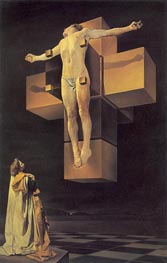
Crucifixion (Corpus Hypercubus) 1954
Oil Painting
$3857
$3857
Canvas Print
$50.00
$50.00
SKU: DAS-3396
Salvador Dali
Original Size: 195 x 124 cm
Metropolitan Museum of Art, New York, USA
Salvador Dali
Original Size: 195 x 124 cm
Metropolitan Museum of Art, New York, USA
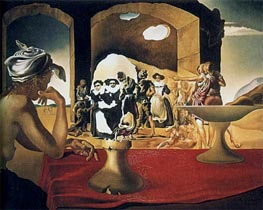
Slave Market with the Disappearing Bust of Voltaire 1940
Oil Painting
$2690
$2690
Canvas Print
$53.32
$53.32
SKU: DAS-3397
Salvador Dali
Original Size: 46 x 65 cm
Salvador Dali Museum, Florida, USA
Salvador Dali
Original Size: 46 x 65 cm
Salvador Dali Museum, Florida, USA
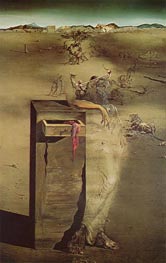
Spain 1938
Oil Painting
$1405
$1405
Canvas Print
$50.00
$50.00
SKU: DAS-3398
Salvador Dali
Original Size: 91.8 x 60.2 cm
Museum Boijmans Van Beuningen, Rotterdam, Netherlands
Salvador Dali
Original Size: 91.8 x 60.2 cm
Museum Boijmans Van Beuningen, Rotterdam, Netherlands
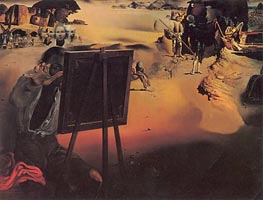
Impressions of Africa 1938
Oil Painting
$2890
$2890
Canvas Print
$57.72
$57.72
SKU: DAS-3399
Salvador Dali
Original Size: 91.5 x 117.5 cm
Museum Boijmans Van Beuningen, Rotterdam, Netherlands
Salvador Dali
Original Size: 91.5 x 117.5 cm
Museum Boijmans Van Beuningen, Rotterdam, Netherlands

Sleep 1937
Oil Painting
$1141
$1141
Canvas Print
$50.00
$50.00
SKU: DAS-3400
Salvador Dali
Original Size: 51 x 78 cm
Private Collection
Salvador Dali
Original Size: 51 x 78 cm
Private Collection
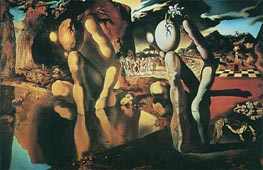
The Metamorphosis of Narcissus 1937
Oil Painting
$3843
$3843
Canvas Print
$50.00
$50.00
SKU: DAS-3401
Salvador Dali
Original Size: 51 x 78 cm
Tate Gallery, London, United Kingdom
Salvador Dali
Original Size: 51 x 78 cm
Tate Gallery, London, United Kingdom
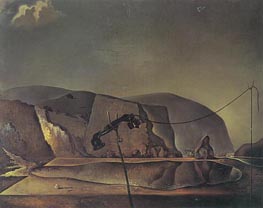
Beach with Telephone 1938
Oil Painting
$1123
$1123
Canvas Print
$52.00
$52.00
SKU: DAS-3402
Salvador Dali
Original Size: 73 x 92 cm
Tate Gallery, London, United Kingdom
Salvador Dali
Original Size: 73 x 92 cm
Tate Gallery, London, United Kingdom
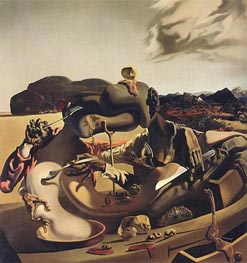
Autumn Cannibalism 1936
Oil Painting
$3445
$3445
Canvas Print
$75.78
$75.78
SKU: DAS-3403
Salvador Dali
Original Size: 65 x 65 cm
Tate Gallery, London, United Kingdom
Salvador Dali
Original Size: 65 x 65 cm
Tate Gallery, London, United Kingdom
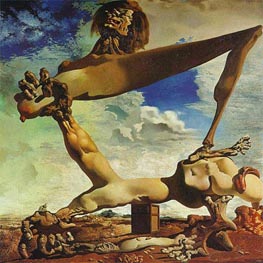
Soft Construction with Boiled Beans - Premonition ... 1936
Oil Painting
$3602
$3602
Canvas Print
$71.92
$71.92
SKU: DAS-3404
Salvador Dali
Original Size: 100 x 99 cm
Philadelphia Museum of Art, Pennsylvania, USA
Salvador Dali
Original Size: 100 x 99 cm
Philadelphia Museum of Art, Pennsylvania, USA

The Angelus of Gala (Portrait of Gala) 1935
Oil Painting
$1635
$1635
Canvas Print
$50.00
$50.00
SKU: DAS-3405
Salvador Dali
Original Size: 32 x 27 cm
Museum of Modern Art, New York, USA
Salvador Dali
Original Size: 32 x 27 cm
Museum of Modern Art, New York, USA
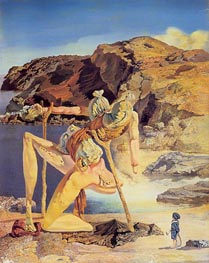
The Specter of Sex Appeal 1934
Oil Painting
$2612
$2612
Canvas Print
$58.97
$58.97
SKU: DAS-3406
Salvador Dali
Original Size: 18 x 14 cm
Gala-Salvador Dali Foundation Museums, Costa Brava, Spain
Salvador Dali
Original Size: 18 x 14 cm
Gala-Salvador Dali Foundation Museums, Costa Brava, Spain
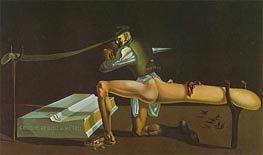
The Enigma of William Tell 1933
Oil Painting
$1693
$1693
SKU: DAS-3407
Salvador Dali
Original Size: 201.3 x 346.5 cm
Moderna Museet, Stockholm, Sweden
Salvador Dali
Original Size: 201.3 x 346.5 cm
Moderna Museet, Stockholm, Sweden
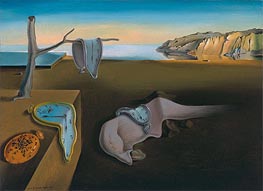
The Persistence of Memory 1931
Oil Painting
$977
$977
Canvas Print
$50.00
$50.00
SKU: DAS-3408
Salvador Dali
Original Size: 24 x 33 cm
Museum of Modern Art, New York, USA
Salvador Dali
Original Size: 24 x 33 cm
Museum of Modern Art, New York, USA
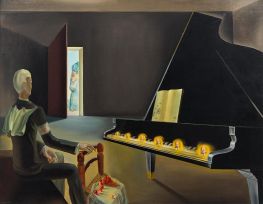
Partial Hallucination. Six Apparitions of Lenin ... 1931
Oil Painting
$3371
$3371
Canvas Print
$59.79
$59.79
SKU: DAS-3409
Salvador Dali
Original Size: 114 x 146 cm
Centre Georges Pompidou, Paris, France
Salvador Dali
Original Size: 114 x 146 cm
Centre Georges Pompidou, Paris, France
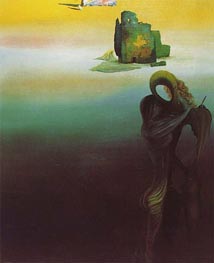
Gradiva Finds the Anthropomorphic Ruins 1932
Oil Painting
$902
$902
Canvas Print
$62.55
$62.55
SKU: DAS-3410
Salvador Dali
Original Size: 65 x 54 cm
Thyssen-Bornemisza Museum, Madrid, Spain
Salvador Dali
Original Size: 65 x 54 cm
Thyssen-Bornemisza Museum, Madrid, Spain
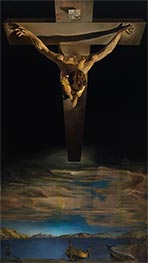
Christ of Saint John of the Cross 1951
Oil Painting
$2827
$2827
Canvas Print
$50.00
$50.00
SKU: DAS-3411
Salvador Dali
Original Size: 205 x 116 cm
Art Gallery and Museum, Glasgow, United Kingdom
Salvador Dali
Original Size: 205 x 116 cm
Art Gallery and Museum, Glasgow, United Kingdom
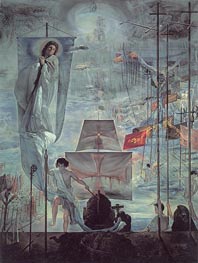
The Discovery of America by Christopher Columbus c.1958/59
Oil Painting
$16768
$16768
SKU: DAS-3412
Salvador Dali
Original Size: unknown
Salvador Dali Museum, Florida, USA
Salvador Dali
Original Size: unknown
Salvador Dali Museum, Florida, USA
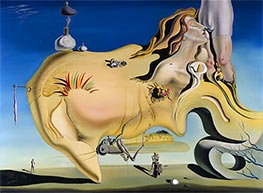
The Great Masturbator 1929
Oil Painting
$2251
$2251
Canvas Print
$55.66
$55.66
SKU: DAS-3413
Salvador Dali
Original Size: 110 x 150 cm
Museo Nacional Reina Sofia, Madrid, Spain
Salvador Dali
Original Size: 110 x 150 cm
Museo Nacional Reina Sofia, Madrid, Spain
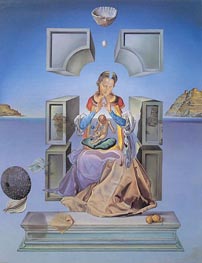
The Madonna of Port Lligat 1949
Oil Painting
$2099
$2099
Canvas Print
$57.86
$57.86
SKU: DAS-3414
Salvador Dali
Original Size: 368 x 246 cm
Haggerty Museum of Art at Marquette University, Milwaukee, USA
Salvador Dali
Original Size: 368 x 246 cm
Haggerty Museum of Art at Marquette University, Milwaukee, USA
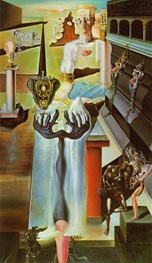
The Invisible Man 1929
Oil Painting
$2329
$2329
Canvas Print
$50.00
$50.00
SKU: DAS-3415
Salvador Dali
Original Size: 140 x 81 cm
Museo Nacional Reina Sofia, Madrid, Spain
Salvador Dali
Original Size: 140 x 81 cm
Museo Nacional Reina Sofia, Madrid, Spain
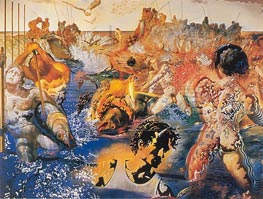
Tuna Fishing c.1966/67
Oil Painting
$16929
$16929
SKU: DAS-3416
Salvador Dali
Original Size: unknown
Foundation Paul Ricard, Ile de Bandol, France
Salvador Dali
Original Size: unknown
Foundation Paul Ricard, Ile de Bandol, France
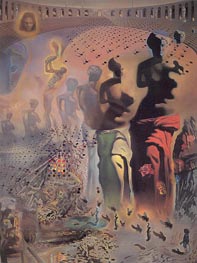
The Hallucinogenic Toreador c.1968/70
Oil Painting
$8533
$8533
Canvas Print
$57.31
$57.31
SKU: DAS-3417
Salvador Dali
Original Size: 399 x 300 cm
Salvador Dali Museum, Florida, USA
Salvador Dali
Original Size: 399 x 300 cm
Salvador Dali Museum, Florida, USA
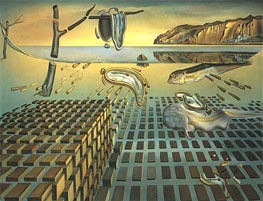
The Disintegration of Persistence of Memory c.1952/54
Oil Painting
$2233
$2233
Canvas Print
$50.00
$50.00
SKU: DAS-3418
Salvador Dali
Original Size: 25.4 x 33 cm
Salvador Dali Museum, Florida, USA
Salvador Dali
Original Size: 25.4 x 33 cm
Salvador Dali Museum, Florida, USA
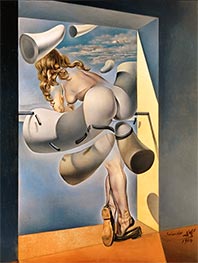
Young Virgin Auto-Sodomized by Her Own Chastity 1954
Oil Painting
$1799
$1799
SKU: DAS-3419
Salvador Dali
Original Size: 40.5 x 30.5 cm
Playboy Collection, Los Angeles, USA
Salvador Dali
Original Size: 40.5 x 30.5 cm
Playboy Collection, Los Angeles, USA